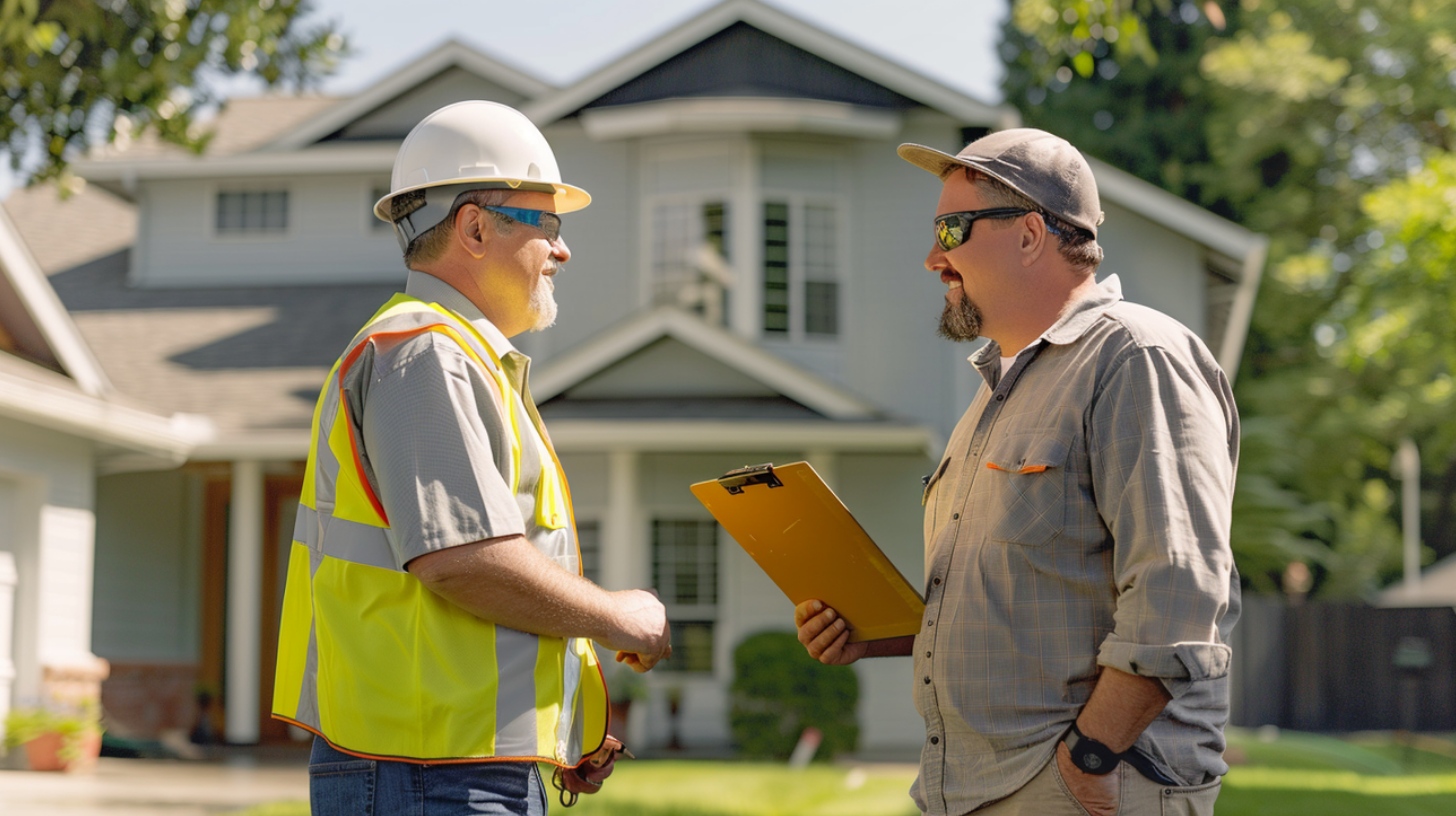Timeframe Considerations During Roof Installation

Timeframe - Factors Influencing the Timeframe - Sky Roofing Construction & Remodeling
Factors Influencing the Timeframe of Roof Installation
Additionally, the condition of the existing roof and any necessary structural repairs may extend the installation period, requiring careful planning and additional time. By recognizing these factors, property owners can set realistic expectations, enhance communication with contractors, and facilitate a smoother and more efficient installation process.
A proactive approach to planning helps align the project with the desired timeline and ensures it stays within budget, leading to a successful outcome.
Size and Complexity of the Roof
For example, a simple gable roof is typically quicker to install than a more complicated hipped roof that requires precise angles and intricate cuts. Additional features like dormers or varying elevations add complexity and can cause further delays.
Open communication with your contractor about your roof’s unique characteristics is essential for obtaining accurate time estimates. By discussing these details in advance, homeowners can ensure their project timelines align with their needs, leading to a smoother, more efficient roofing process.
Type of Roofing Material
For example, asphalt shingles are favored for quick installation, typically completed in just a few days. In contrast, metal roofing, known for its durability, may take longer due to the need for specialized labor. Wooden shingles and slate tiles, prized for their aesthetic appeal and long lifespan, often require more installation time because of the detailed craftsmanship involved.
Weather Conditions
Conversely, inclement weather, such as heavy rain or extreme temperatures, can lead to unforeseen delays, potentially causing structural damage and necessitating rescheduling to maintain safety and protect material integrity. For example, working in wet conditions could compromise the roofing structure and the workers’ safety.
Effective communication between contractors and clients is also essential when weather conditions change. Keeping everyone informed ensures that adjustments can be made promptly, minimizing disruption and safeguarding the project’s quality.
Contractor Availability and Crew Size
Additionally, crew size can greatly affect productivity—larger teams can often work more efficiently by tackling multiple tasks simultaneously and reducing the likelihood of delays. A well-organized crew accelerates the installation process and allows for quick resolution of any unexpected issues, keeping the project on track.

Timeframe - Planning and Scheduling for Roof Installation - Sky Roofing Construction & Remodeling
Planning and Scheduling for an Efficient Roof Installation
Factors such as weather conditions, material availability, and the job’s complexity can significantly influence a roofing project’s timeframe. By establishing a clear timeline and working closely with experienced professionals, homeowners can anticipate project milestones, minimize delays, and protect their investments from unforeseen challenges.
A well-coordinated schedule is essential to maintaining safety standards, fostering effective communication among all parties involved, and ensuring that the final result aligns with the expectations of quality and durability that a new roof demands.
Establishing a Realistic Timeline
Clear communication with roofing contractors is key to setting a realistic timeline and fostering a collaborative environment where expectations are aligned. Viewing the timeline as an investment in the building’s longevity and safety highlights the importance of prioritizing quality over speed.
Homeowners and building owners should also factor in local weather patterns, the availability of skilled labor, and any other potential challenges to create a more accurate and achievable schedule. By proactively considering these elements, they can ensure a smooth roofing installation that meets aesthetic and functional requirements.
Coordination with Contractors and Other Parties
Consistent communication among all parties promotes transparency and enables timely adjustments, ensuring the project stays on course. However, it’s important to recognize that unforeseen issues, such as unpredictable weather or material shortages, can impact the schedule. To mitigate these potential delays, developing a comprehensive contingency plan is crucial.
This proactive strategy prepares homeowners and building owners for possible setbacks and ensures the project can proceed smoothly, even when obstacles arise. By emphasizing coordination, clear communication, and thorough contingency planning, you can facilitate a more efficient roof installation process and protect your investment.
Building Permits and Approvals
By proactively addressing these requirements and integrating permit timelines into the project schedule, homeowners can prevent interruptions and avoid potential issues, ensuring a smoother installation process. Properly managing permits facilitates operational efficiency and contributes to the roofing project’s long-term integrity and safety.
The Consequences of Ignoring the Timeframe
Additionally, missed deadlines can negatively impact team morale and erode trust among contractors, property owners, and suppliers, straining professional relationships. Effective time management is crucial for meeting project milestones and ensuring high-quality work and overall satisfaction. By recognizing the consequences of disregarding timeframes, property owners can navigate their roofing projects more effectively and make informed decisions safeguarding their investment.

Timeframe - Tips for Homeowners - Sky Roofing Construction & Remodeling
Tips for Homeowners to Ensure Timely Roof Installation
Additionally, planning the project around favorable seasons can improve the chances of timely completion, as some weather conditions are more conducive to roofing work. Proactive preparation of the property is also essential, allowing for a smooth project initiation and reducing the risk of delays due to unforeseen issues. Staying actively involved throughout the process enables homeowners to monitor progress and address concerns promptly, keeping the installation on track.
Achieve Your Roofing Goals Within the Right Timeframe with Us
A well-managed timeframe is vital for the success of your roofing project, impacting everything from cost to quality. To ensure your installation goes smoothly and is completed on schedule, consider working with a reputable roofing contractor who can effectively address all the variables involved. At Sky Roofing Construction & Remodeling (skyroofingconstructiontx.com), we are committed to providing timely and professional service. Contact us today at (210) 942-9797 to schedule your roofing consultation and set your project on the path to success.
Willis Vachon is a seasoned contributing writer for Sky Roofing Construction & Remodeling, specializing in the technical and safety aspects of roofing construction. With a keen eye for detail and a passion for ensuring quality and safety in every project, Willis provides valuable insights that help both professionals and homeowners make informed decisions about their roofing needs.

